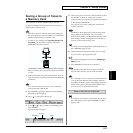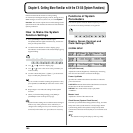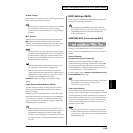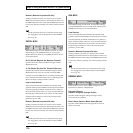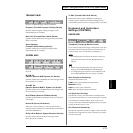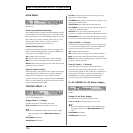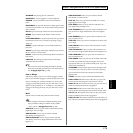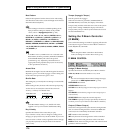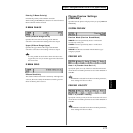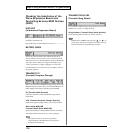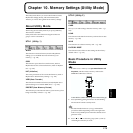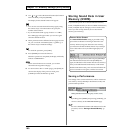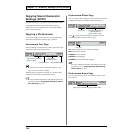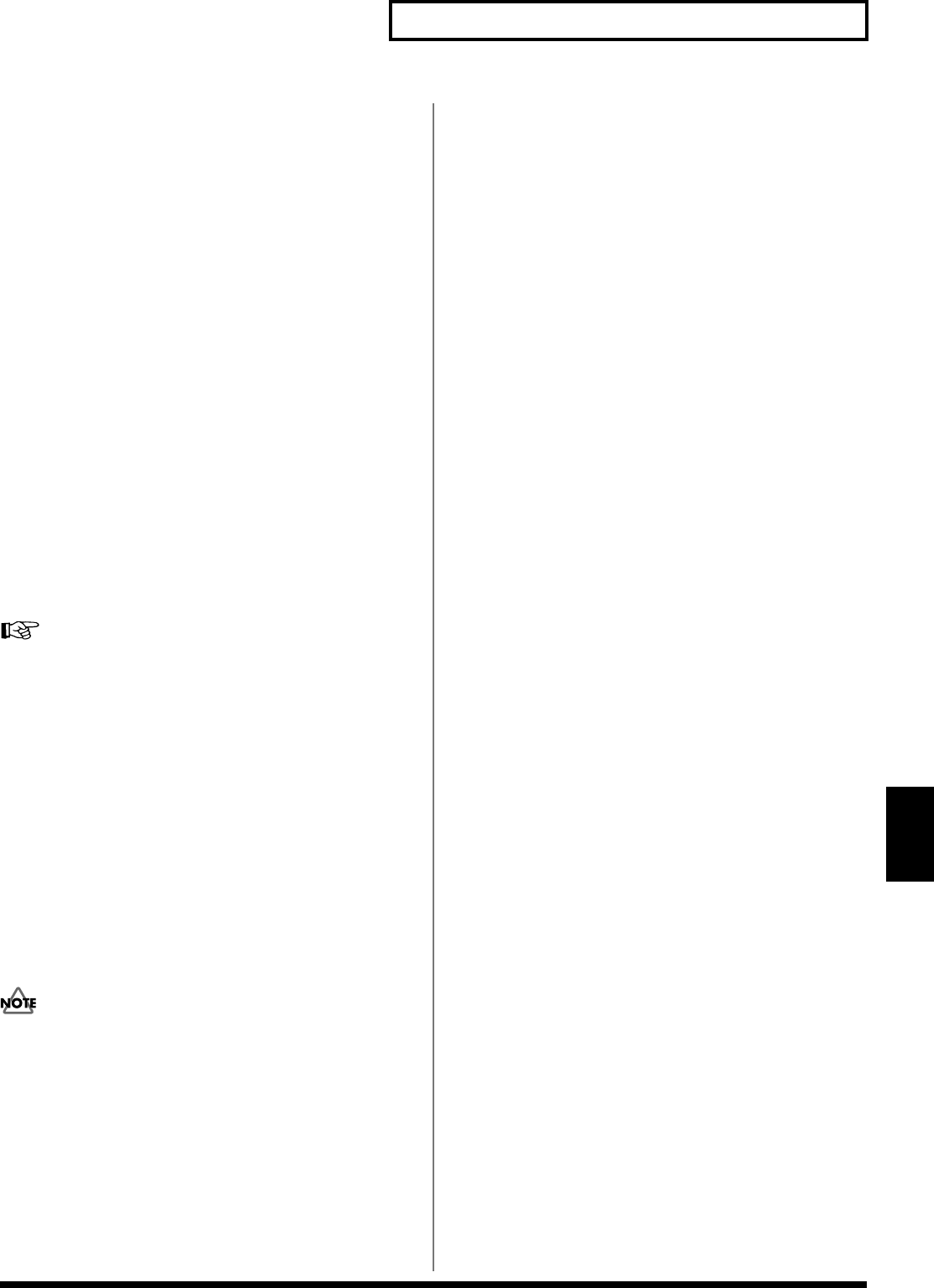
175
Chapter 9. Getting More Familiar with the XV-88 (System Functions)
Chapter 9
SHAMISEN: The playing style of a Shamisen.
BOUND BALL: A style suggestive of a bouncing ball.
RANDOM: A style in which the notes sound in random
order.
BOSSA NOVA: A style with bossanova rhythm guitar. Hold
3–4 notes for best results. You can increase the tempo and use
this as a Samba.
SALSA: Typical salsa style. Hold 3–4 notes for best results.
MAMBO: Typical mambo style. Hold 3–4 notes for best
results.
LATIN PERCUSSION: A rhythm style with Latin percussion
instruments such as Clave, Cowbell, Clap, Bongo, Conga,
Agogo etc.
SAMBA: Typical samba style. Use for rhythm patterns or
bass lines.
TANGO: Typical tango rhythm style. Hold the root, 3rd and
5th of a triad etc. for best results.
HOUSE: A style for house piano backing. Hold 3–4 notes for
best results.
LIMITLESS: The settings of all parameters can be freely
combined without restriction.
Choices can be set for the Motif, Beat Pattern, Shuffle
Rate and Accent Rate parameters for each style. Refer to
the “Arpeggio Style List” (p. 268).
Octave Range
Sets the key range in octaves over which arpeggio will take
place. If you want the arpeggio to sound using only the notes
that you actually play, set this parameter to 0. To have the
arpeggio sound using the notes you play and notes 1 octave
higher, set this parameter to +1. A setting of -1 will make the
arpeggio sound using the notes you play and notes 1 octave
lower.
Motif
Sets the order in which notes of the chord will sound.
Some settings will not be available depending on the
Style parameter setting. For details on the possible
values, refer to “Arpeggio Style List” (p. 268).
SINGLE UP: Notes you press will be sounded individually,
beginning from low to high.
SINGLE DOWN: Notes you press will be sounded
individually, from high to low.
SINGLE UP&DOWN: Notes you press will be sounded
individually, from low to high, and then back down from
high to low.
SINGLE RANDOM: Notes you press will be sounded
individually, in random order.
DUAL UP: Notes you press will be sounded two at a time,
beginning from low to high.
DUAL DOWN: Notes you press will be sounded two at a
time, beginning from high to low.
DUAL UP&DOWN: Notes you press will be sounded two at a
time, from low to high, and then back down from high to
low.
DUAL RANDOM: Notes you press will be sounded two at a
time, in random order.
TRIPLE UP: Notes you press will sound three at a time, from
low to high.
TRIPLE DOWN: Notes you press will sound three at a time,
from high to low.
TRIPLE UP&DOWN: Notes you press will sound three at a
time, from low to high and then back down from high to low.
TRIPLE RANDOM: Notes you press will sound three at a
time, in random order.
NOTE ORDER: Notes you press will be sounded in the order
in which you pressed them. By pressing the notes in the
appropriate order you can produce melody lines. Up to 128
notes will be remembered.
GLISSANDO: Each chromatic step between the highest and
lowest notes you press will sound in succession, repeating
upward and downward. Press only the lowest and the
highest notes.
CHORD: All notes you press will sound simultaneously.
BASS+CHORD 1–5: The lowest of the notes you play will
sound, and the remaining notes will sound as a chord.
BASS+UP 1–8: The lowest of the notes you play will sound,
and the remaining notes will be arpeggiated.
BASS+RND 1–3: The lowest of the notes you play will
sound, and the remaining notes will sound in random order.
TOP+UP 1–6: The highest of the notes you play will sound,
and the remaining notes will be arpeggiated.
BASS+UP+TOP: The highest and the lowest of the notes you
play will sound, and the remaining notes will be arpeggiated.



